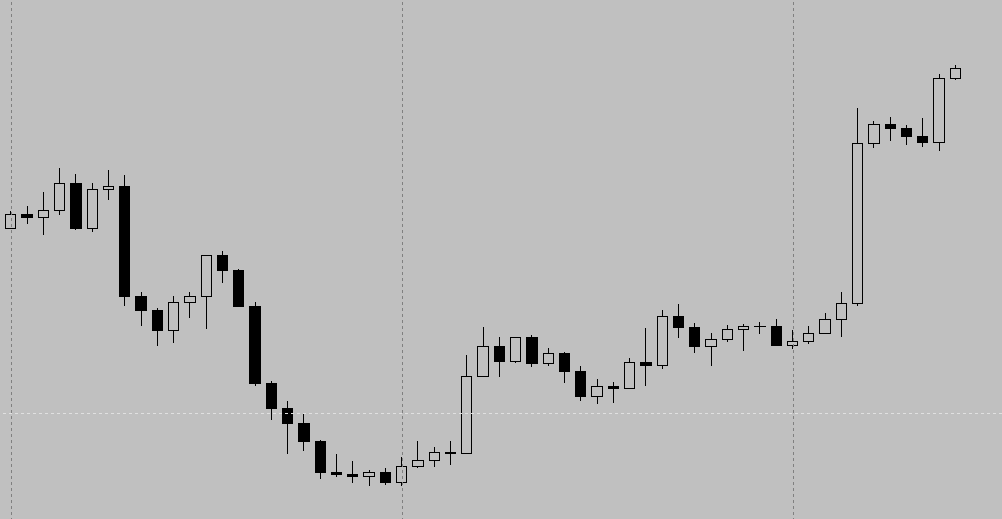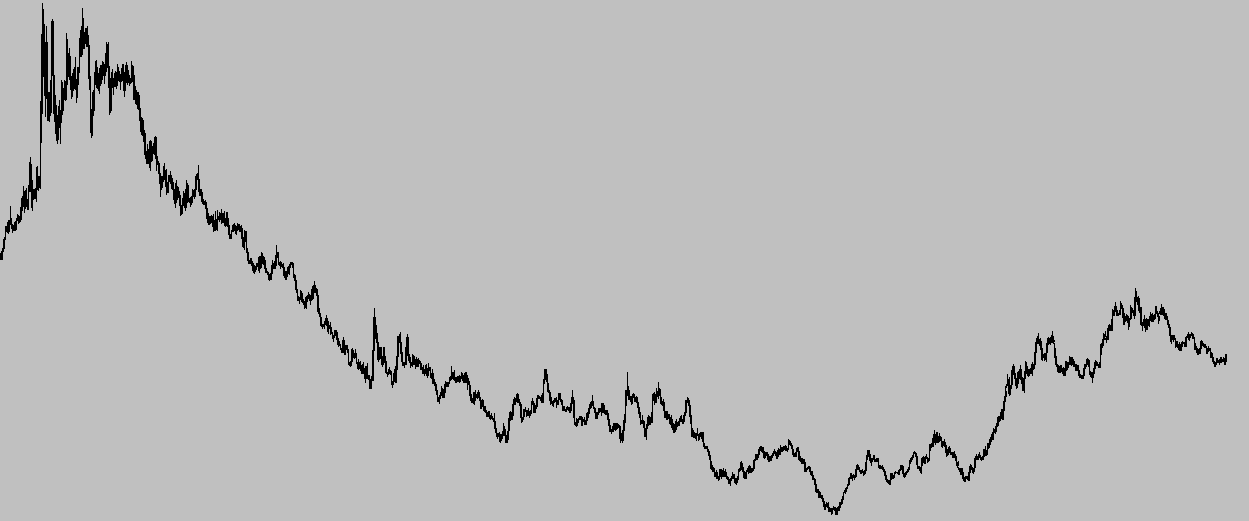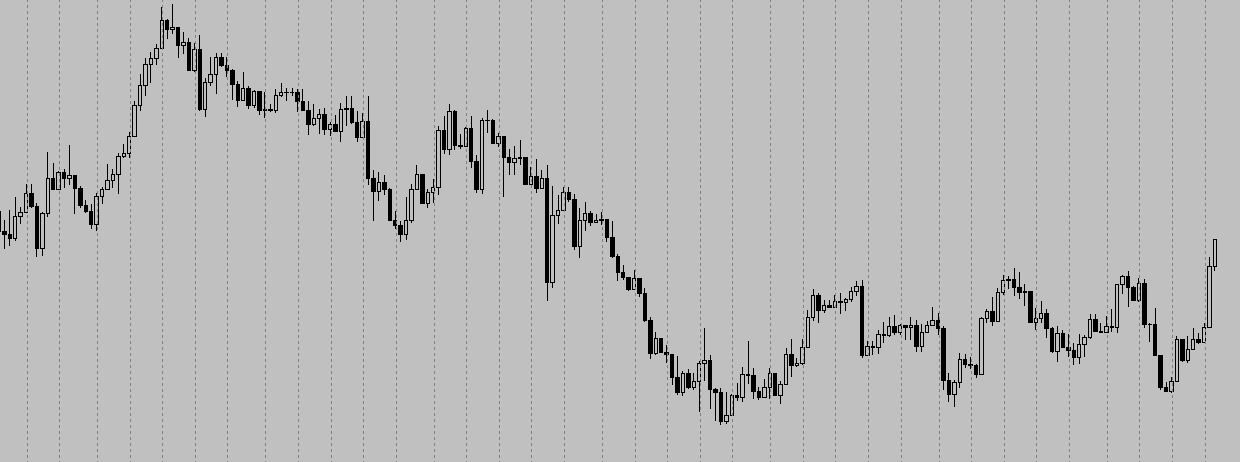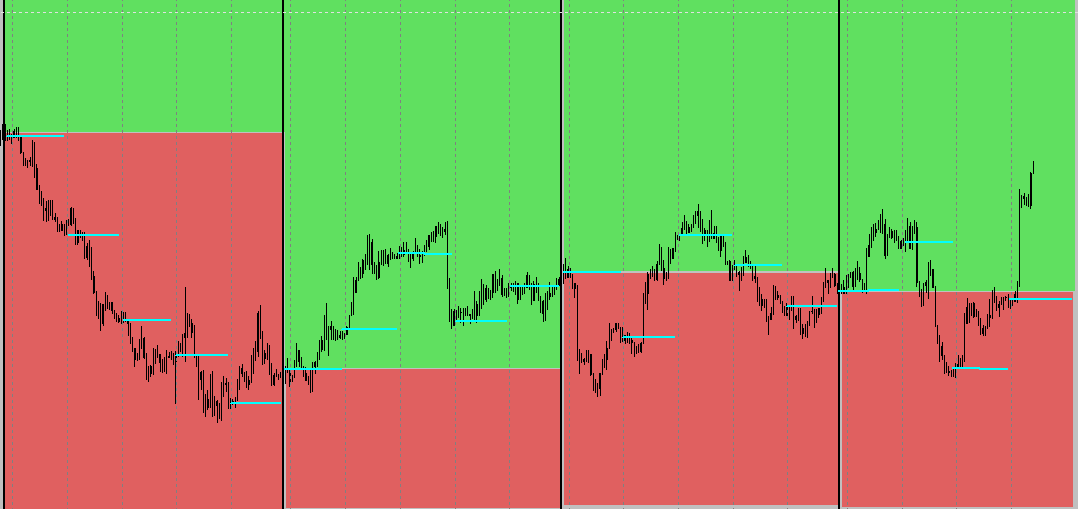1. What is your job?
We are in the realm of proprietary trading. That means that we risk our own capital in order to come out with more than we went in with. This is totally different from the Sales Trading positions that big Investment Banks offer. Sales Trading and Dealing are commission-based activites, that are meant to create liquidity for market participants (their clients & counterparties) taking on as little market risk as possible. They need to be good at hedging their positions. Prop-trading is a totally different story. Prop-traders take on market risk because they have faith in their capability to predict market behaviour.
So the prop-trader needs to predict market behaviour – not “the future”. There is a big difference here and that's what we're going to focus on in this article. I'm going to demonstrate why prop-trading is possible (contrary to the Efficient Market Hypothesis) and why it hinges on the fact that financial markets are made up of human interaction.
Everything will become clear after this example:
You have a 9 to 5 job and you're waking up on a weekday. In your experience, you know that you have an hour before having to catch the bus that takes you downtown. So your experience has allowed you to create a routine so you will be prepared and ready to get to the bus stop on time. You will also be able to predict that the bus will arrive on time, most of the time. You also know that when it's late, it arrived 5 minutes later; and you know that it's unusual for the bus to arrive early. In the same way, you can predict with a certain accuracy when it's best to avoid the freeway because of rush-hour. You can also predict at what time you'll have to take your siblings to school.
The point is that predicting mass behaviour (or “herd behaviour” as the institutionals commonly refer to us) is relatively simple if you observe what happens and when it happens and how it happens. Yes, you got it: humans are creatures of habit. And because the markets are made out of human interaction (or robots programmed by humans), it makes the markets somewhat predictable.
So you may ask: why does it take so long for a trader to learn and become consistently profitable? Aside from the fact that I might have a low "trading-IQ", one thing I've figured out is that the distance between the brain and the finger might not be so close as you'd think - if you're not careful. I know I'm not the only trader who has repeated the same mistakes, or variations of same. My contention is that old habits die hard. Real hard. And only if you deliberately plan to kill them.
2. On the correct thought process
Trading is difficult also because the thought process required is almost diametrally opposite to what our education systems teach us. “Learn the facts, not the analytical thought process that led to the fact”: that's the common message. Memorize and regurgitate the knowledge of great minds and their opinions. This just doesn't work in financial markets. You need to open your eyes, think logically, observe in a critical way and put your observations to the test. It's very much like the good old scientific method from the 1700s, where observation, experience & knowledge come together and translate into practice. That's why they say “you must talk the talk and walk the walk”.
In the process, you must be aware of the level of abstraction you're on. You need to be very much aware of what can be tested & verified, what is assumed, what is suspect. If you want to trade professionally then you will need to observe directly (real time charts in front of you), know your level of abstraction (you're using a chart which is only a map – it's not reality), the lessons learned through experience (which should be detailed in a trading diary), recognition of similarities and differences, and the use of all external help (books, trading seminars, etc.).
So traders usually trade using a chart. Take note that the chart is not reality. The chart is an abstraction. The chart is only a “map of reality” but if you resist the temptation to clutter it up with fancy lines, then it's a clear enough map to guide you. You must respect a couple of rules though:
1) You must know whether your way of reading the map applies to reality. Basically I mean that all traders look at the same charts but many just can't get their head around a simple set of logical rules that keep them out of harms way.
2) The map of reality (the chart) is only a guide. Just like a real map, your objectives will decide the level of detail your map will need to show. Get in too close and you'll miss the context. Get too far away and you'll have a tough time getting a good risk-reward ratio on your trades.

Looking too close - this view is like looking at a specific neighbourhood on the map, when you still have to get out of the city. You see the trees but not the forest.
Source: FXCM marketscope

Looking from too far away - this is like having to get somewhere but looking at the map of a while state or country. You see the forest, but not the trees.
Source: FXCM Marketscope

The sweet spot - you see some of the forest and some of the trees. Generally speaking, it may be 2 months of data if you're looking for intraday to multi-day positions.
Source: FXCM Marketscope

Where is the market going? What stance should I take? Long? Short? Flat? When using a map to get somewhere, you need to know where you're going. In a similar fashion, your "map of reality" needs to give you a direction. A logical way to do this is to take not of the opening prices of the week and of the day, trying to go with the flow.
Source: FXCM Marketscope
3. On imperfect information
The moment we are confronted with a choice (to buy, to sell, to hold, to fold, to walk away), our brains love certainty. But mother nature, life and the financial markets are not black & white. There are always exceptions; there are always situations that seem absolutely clear to you, only to find out later that you were ill-informed. In the markets, as in life, this assolves us from having to be right or wrong and give us the opportunity to be agile, practical, thoughtful – we can cut our loosers and ride our winners.
It's horrible to build your life around terms like “I don't know, maybe, up to a certain point, probably” but if you want to trade then there's no other way that I know of. So the average trader will smack some fancy lines on his chart, use oscillators he knows nothing about, use “guru” reccomendations trying to find that degree of certainty that he doesn't have. He will then believe any bit of nonsense that is said with convinction. And at the end, taken by fear, he'll decline all responsibility and will delegate the decision making to others.
You cannot have an answer to all questions. That would be asking too much. We are using a chart as our guide and you cannot try to impose a structure on something that does not have one.
Bottom line: observe HOW price moves and WHAT price tells you when it starts to behave differently. Major losses come when you have a closed mind and are not able to see that conditions have changed. Of course, reducing losses doesn't make you a winning trader. But it does limit the amount of stress you're under, because the hardest part of this business is accepting losses as a part of doing business. Nothing more, nothing less. You cannot avoid them. So learn to deal with them.
References:
1. Orderflowtrading for fun and profit - Daemon Goldsmith 2011
2. Investment Psychology Explained - M.J. Pring
3. Winning the Mental Game on Wall Street - John Magee
Note: All information on this page is subject to change. The use of this website constitutes acceptance of our user agreement. Please read our privacy policy and legal disclaimer. Opinions expressed at FXstreet.com are those of the individual authors and do not necessarily represent the opinion of FXstreet.com or its management. Risk Disclosure: Trading foreign exchange on margin carries a high level of risk, and may not be suitable for all investors. The high degree of leverage can work against you as well as for you. Before deciding to invest in foreign exchange you should carefully consider your investment objectives, level of experience, and risk appetite. The possibility exists that you could sustain a loss of some or all of your initial investment and therefore you should not invest money that you cannot afford to lose. You should be aware of all the risks associated with foreign exchange trading, and seek advice from an independent financial advisor if you have any doubts.
Editors’ Picks
EUR/USD clings to gains above 1.0750 after US data

EUR/USD manages to hold in positive territory above 1.0750 despite retreating from the fresh multi-week high it set above 1.0800 earlier in the day. The US Dollar struggles to find demand following the weaker-than-expected NFP data.
GBP/USD declines below 1.2550 following NFP-inspired upsurge

GBP/USD struggles to preserve its bullish momentum and trades below 1.2550 in the American session. Earlier in the day, the disappointing April jobs report from the US triggered a USD selloff and allowed the pair to reach multi-week highs above 1.2600.
Gold struggles to hold above $2,300 despite falling US yields

Gold stays on the back foot below $2,300 in the American session on Friday. The benchmark 10-year US Treasury bond yield stays in negative territory below 4.6% after weak US data but the improving risk mood doesn't allow XAU/USD to gain traction.
Bitcoin Weekly Forecast: Should you buy BTC here? Premium

Bitcoin (BTC) price shows signs of a potential reversal but lacks confirmation, which has divided the investor community into two – those who are buying the dips and those who are expecting a further correction.
Week ahead – BoE and RBA decisions headline a calm week

Bank of England meets on Thursday, unlikely to signal rate cuts. Reserve Bank of Australia could maintain a higher-for-longer stance. Elsewhere, Bank of Japan releases summary of opinions.
RECOMMENDED LESSONS
Making money in forex is easy if you know how the bankers trade!
Discover how to make money in forex is easy if you know how the bankers trade!
5 Forex News Events You Need To Know
In the fast moving world of currency markets, it is extremely important for new traders to know the list of important forex news...
Top 10 Chart Patterns Every Trader Should Know
Chart patterns are one of the most effective trading tools for a trader. They are pure price-action, and form on the basis of underlying buying and...
7 Ways to Avoid Forex Scams
The forex industry is recently seeing more and more scams. Here are 7 ways to avoid losing your money in such scams: Forex scams are becoming frequent. Michael Greenberg reports on luxurious expenses, including a submarine bought from the money taken from forex traders. Here’s another report of a forex fraud. So, how can we avoid falling in such forex scams?
What Are the 10 Fatal Mistakes Traders Make
Trading is exciting. Trading is hard. Trading is extremely hard. Some say that it takes more than 10,000 hours to master. Others believe that trading is the way to quick riches. They might be both wrong. What is important to know that no matter how experienced you are, mistakes will be part of the trading process.
